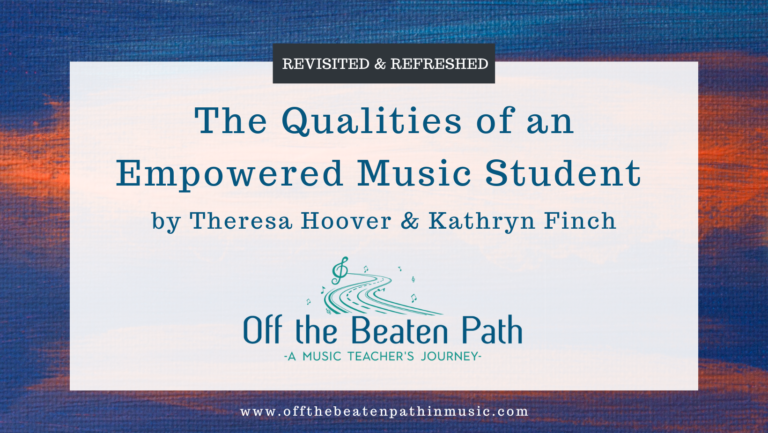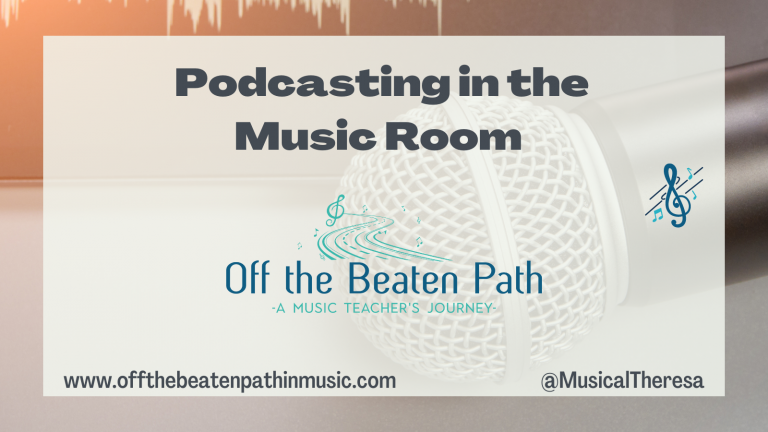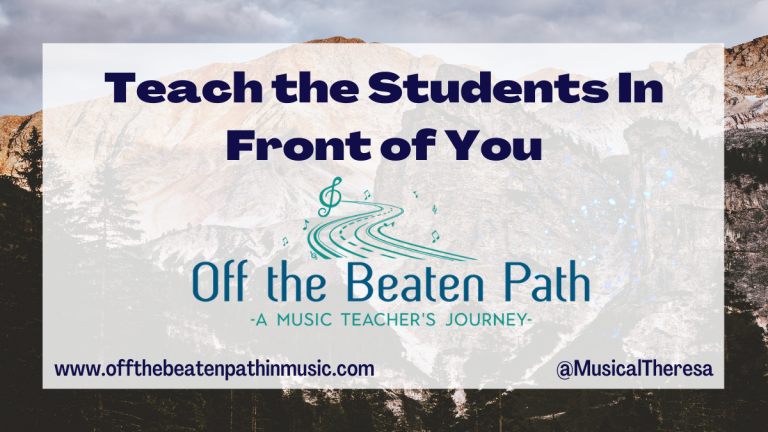Student-Centered Performances
In a performance-based class it may seem challenging to empower students and create a learner-centered environment. Musical ensembles are director-let by nature. Shifting focus to the students is not impossible, but it requires an open mind and careful planning to make it happen! Here are four ways you can create student-centered ensembles and performances.
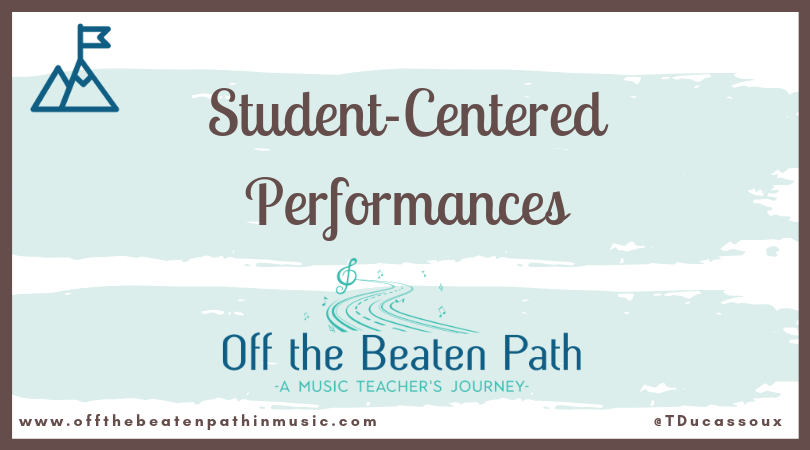
Student Choice in Repertoire
I don’t know if others are like this, but one of my favorite things is programming repertoire! I love reading through scores, examining parts, listening to recordings, and picking pieces that are just right for my ensembles. And putting together a full program, making sure each piece works with the next, is the icing on the cake. But I have realized, I’m having all of this fun programming, but what about my students? Consider having students to be part of this process.
Have students suggest and vote on a concert theme.
Students could choose or vote for one concert selection – either choosing between pieces you have selected (for younger students) or older students could choose on their own from either your music library or the
There are situations where you might give students more control over the repertoire and performance planning. Allowing students to plan a concert from start to finish could be an awesome PBL (Project Based Learning) opportunity! With PBL, student ownership is at the forefront. This winter my beginning instrumental students helped plan the music for their

Kathryn Finch did something similar with her kindergarten students, empowering them to choose the songs and activities they would share with parents during a spring program. The students loved sharing their voices in this way, and parents appreciated it as well.
Share with students the criteria or process you use when picking repertoire, and give them the opportunity to take part. Whatever you decide, giving students a choice gives them ownership. When students own the process (or product) it’s more meaningful for them.
Student Ownership During Rehearsals
The best rehearsals are typically the ones I have planned to a T. I know exactly what warm-ups we will do to address the specific learning goals for each piece. I have a list of problem spots already in mind. There is little talking, a lot of playing, and a great sense of accomplishment when we finish! However, the experience is teacher directed and teacher prescribed. Students are merely compliant participants.
To give the students more ownership of this process, try changing things up. During a rehearsal, have in mind a list of pieces you’d like to work on, then ask students to fill in the rest. Have students suggest what warm-ups you should do. You could even have students lead warm-ups! Mine love having this opportunity. Next play straight through a piece of music. Ask the students, what did you notice? What did you hear? What areas should we focus on first? I did this with my 5th grade ensembles last week and it was great! After running through a piece I had students request what areas we needed to rehearse and for what specific reasons. Everything they heard was spot on, and the piece improved. The students knew we would only work on what they suggested, so they had to be on top of the issues.
Concert Announcements
I’ll never forget the day I discovered having students introduce pieces at a concert instead of me. It was glorious! I didn’t have to speak, I had a minute to breathe, and the percussion had time to set up equipment for the next piece. It was perfect! What took this to the next level was having students also write what they would say.
I’ve done this a few different ways. I’ve had students volunteer to write introductions for specific pieces and write them at home. The student who wrote the introduction got to read it at the concert. That definitely works, but it involves only a few students. I’ve also had the entire ensemble take part. In the winter I divided the class into groups. I assigned each group a piece to write the introduction for. The groups would then elect (rock, paper, scissors) one or two people to read for the concert. This situation was ideal, because everyone in the class took part in the experience. For my upcoming concert I formed a committee to come in during lunch to work together and write. I would have preferred for the entire ensemble to do it, but with schedules and spring break it’s just not possible this time around. Regardless, this is an easy way to give students ownership in a performance.
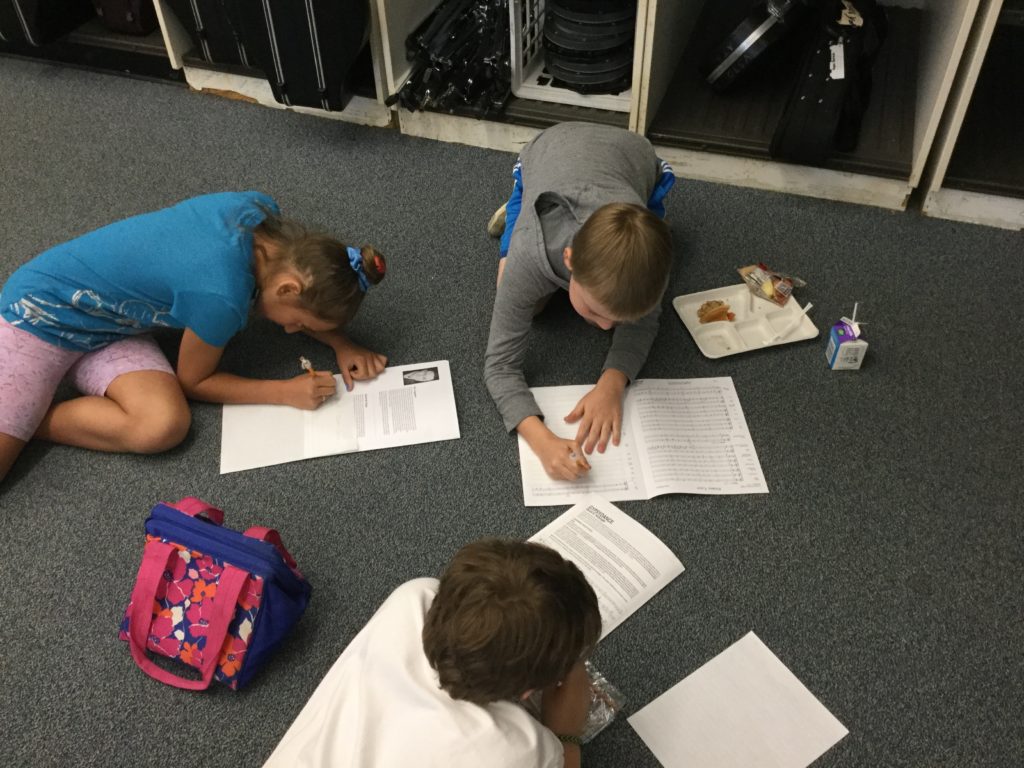
Concert Welcome Videos
I borrowed this idea from Keith Ozsvath who shared it on his blog, Teaching Music and More. It’s too good to not include here! Using

After

These are just a few ideas to get you started in creating student-centered performances. By giving students the opportunity to take ownership in the concert preparations, the performance becomes more meaningful. Students will appreciate the experience! What other ways have you been able to empower your students and make performances more student-centered? Please share!
Links for further reading:
What If We Were Obsessively Learner-Centered in Schools, by Katie Martin
Four Inquiry Qualities at the Heart of Student-Centered Teaching, by Trevor Mackenzie
Enjoy what you have just read? Please consider subscribing to my blog!

